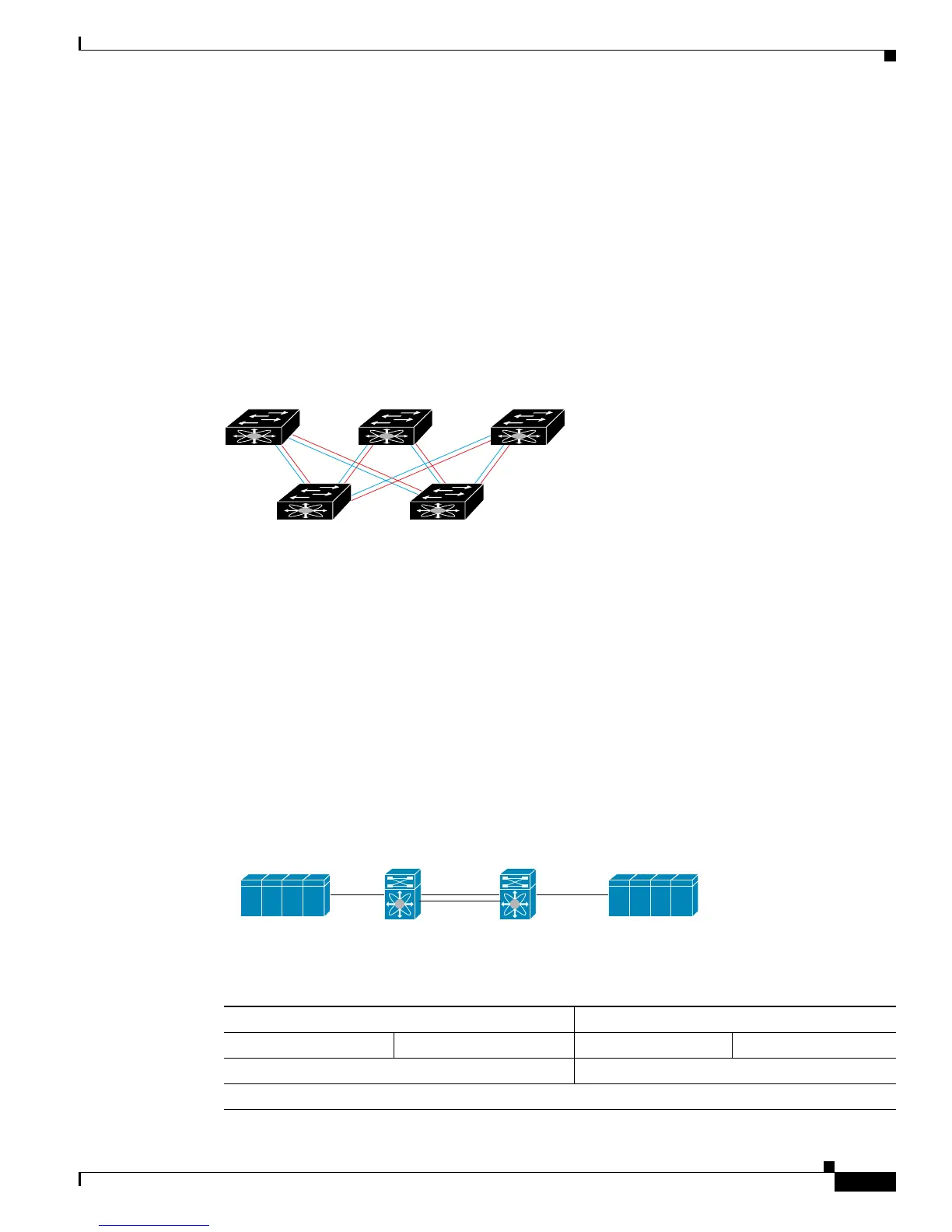Send documentation comments to mdsfeedback-doc@cisco.com
32-3
Cisco MDS 9000 Family Fabric Manager Configuration Guide
OL-17256-03, Cisco MDS NX-OS Release 4.x
Chapter 32 Configuring Fibre Channel Routing Services and Protocols
About FSPF
Redundant Links
To further improve on the topology in Figure 32-1, each connection between any pair of switches can be
replicated; two or more links can be present between a pair of switches. Figure 32-2 shows this
arrangement. Because switches in the Cisco MDS 9000 Family support PortChanneling, each pair of
physical links can appear to the FSPF protocol as one single logical link.
By bundling pairs of physical links, FSPF efficiency is considerably improved by the reduced database
size and the frequency of link updates. Once physical links are aggregated, failures are not attached to a
single link but to the entire PortChannel. This configuration also improves the resiliency of the network.
The failure of a link in a PortChannel does not trigger a route change, thereby reducing the risks of
routing loops, traffic loss, or fabric downtime for route reconfiguration.
Figure 32-2 Fault Tolerant Fabric with Redundant Links
For example, if all links are of equal speed and no PortChannels exist, the FSPF calculates four equal
paths from A to C: A1-E-C, A2-E-C, A3-D-C, and A4-D-C. If PortChannels exist, these paths are
reduced to two.
Fail-Over Scenarios for PortChannels and FSPF Links
The SmartBits traffic generator was used to evaluate the scenarios displayed in Figure 32-3. Two links
between switch 1 and switch 2 exist as either equal-cost ISLs or PortChannels. There is one flow from
traffic generator 1 to traffic generator 2. The traffic was tested at 100% utilization at 1 Gbps in two
scenarios:
• Disabling the traffic link by physically removing the cable (see Table 32-1).
• Shutting down either switch 1 or switch 2 (see Table 32-2).
Figure 32-3 Fail-Over Scenario Using Traffic Generators
Ta b l e 32-1 Physically Removing the Cable for the SmartBits Scenario
PortChannel Scenario FSPF Scenario (Equal cost ISL)
Switch 1 Switch 2 Switch 1 Switch 2
110 msec (~2K frame drops) 130+ msec (~4k frame drops)
100 msec (hold time when a signal loss is reported as mandated by the standard)
Traffic Generator 1 Traffic Generator 2
Switch 1 Switch 2
99278

